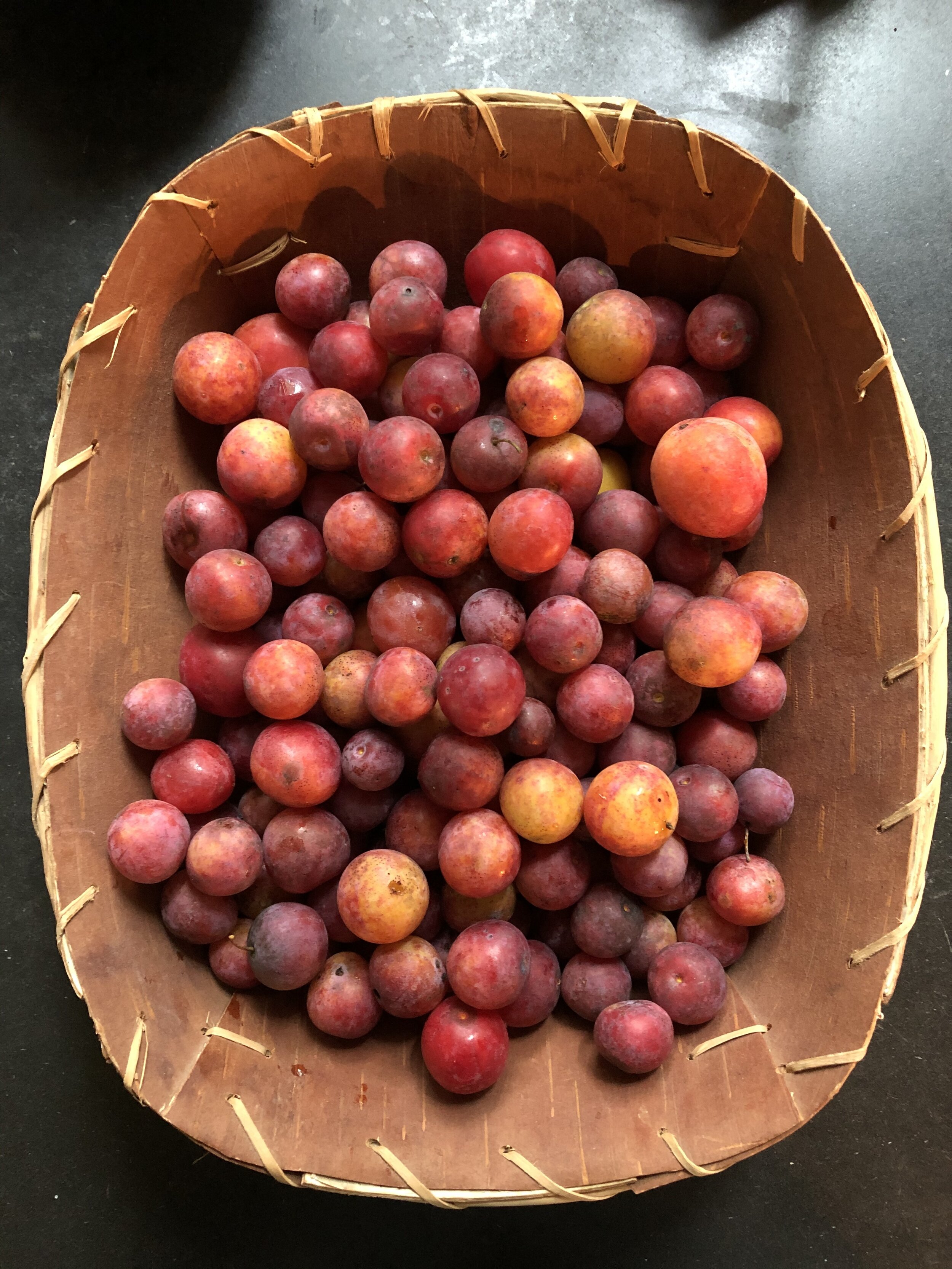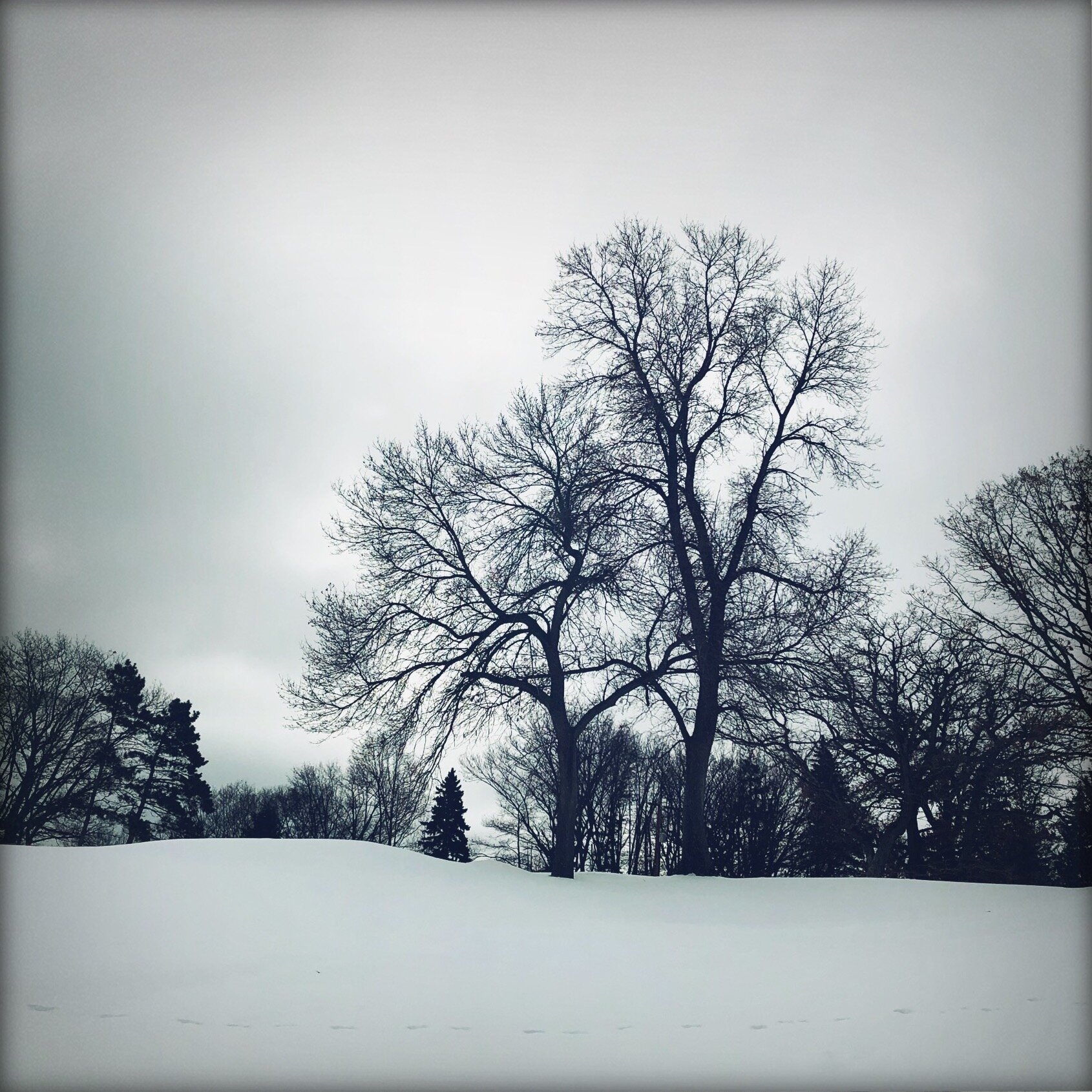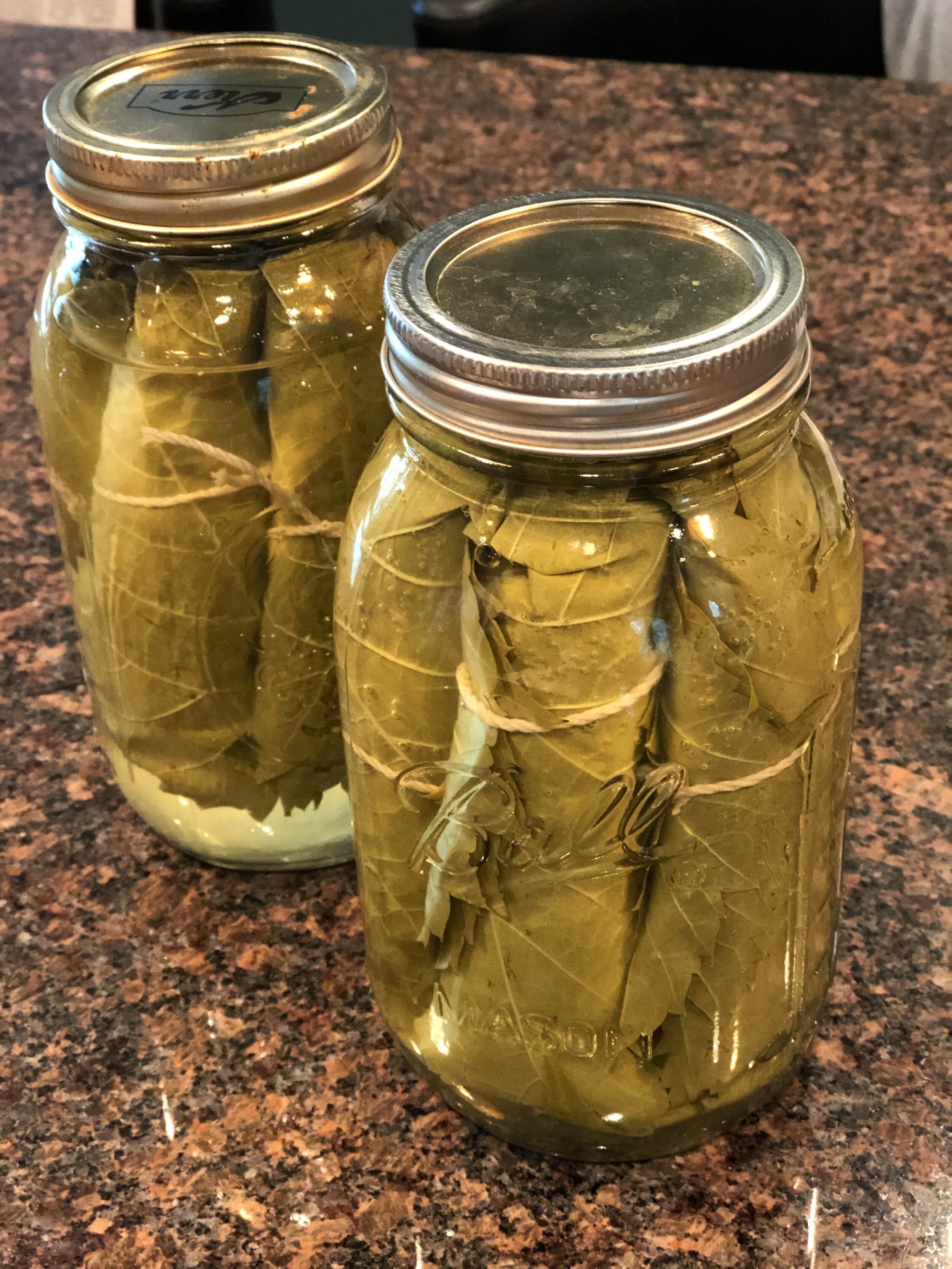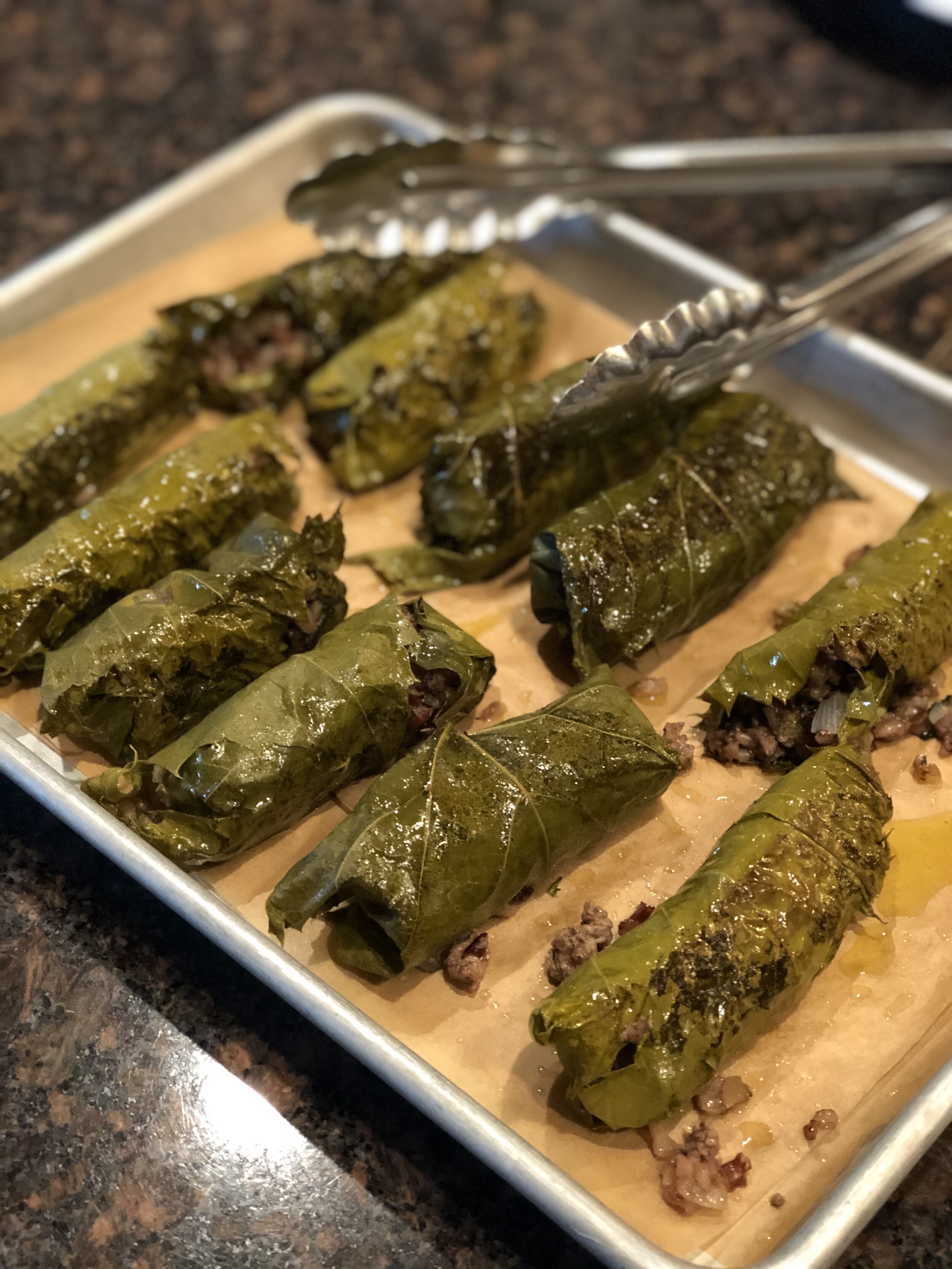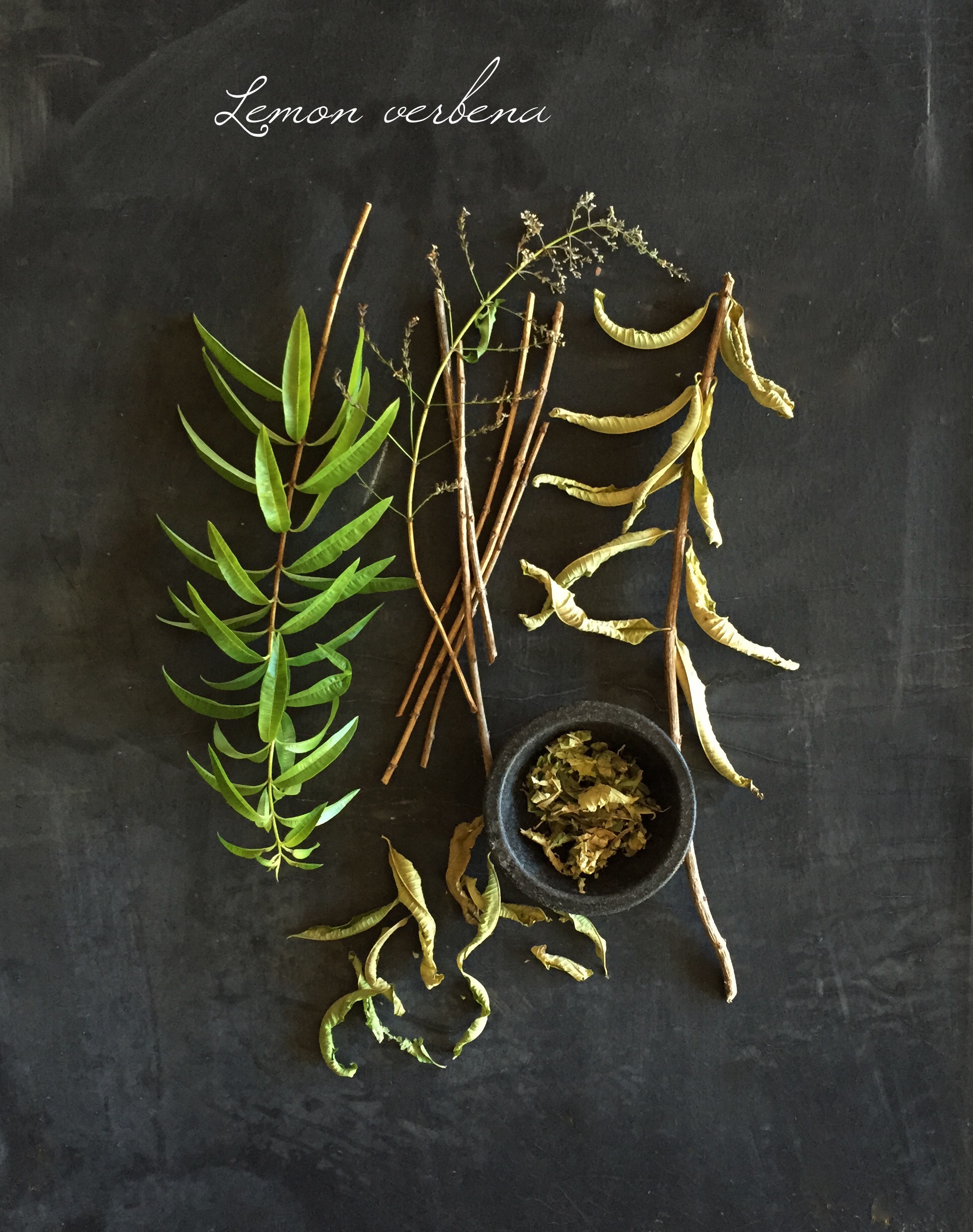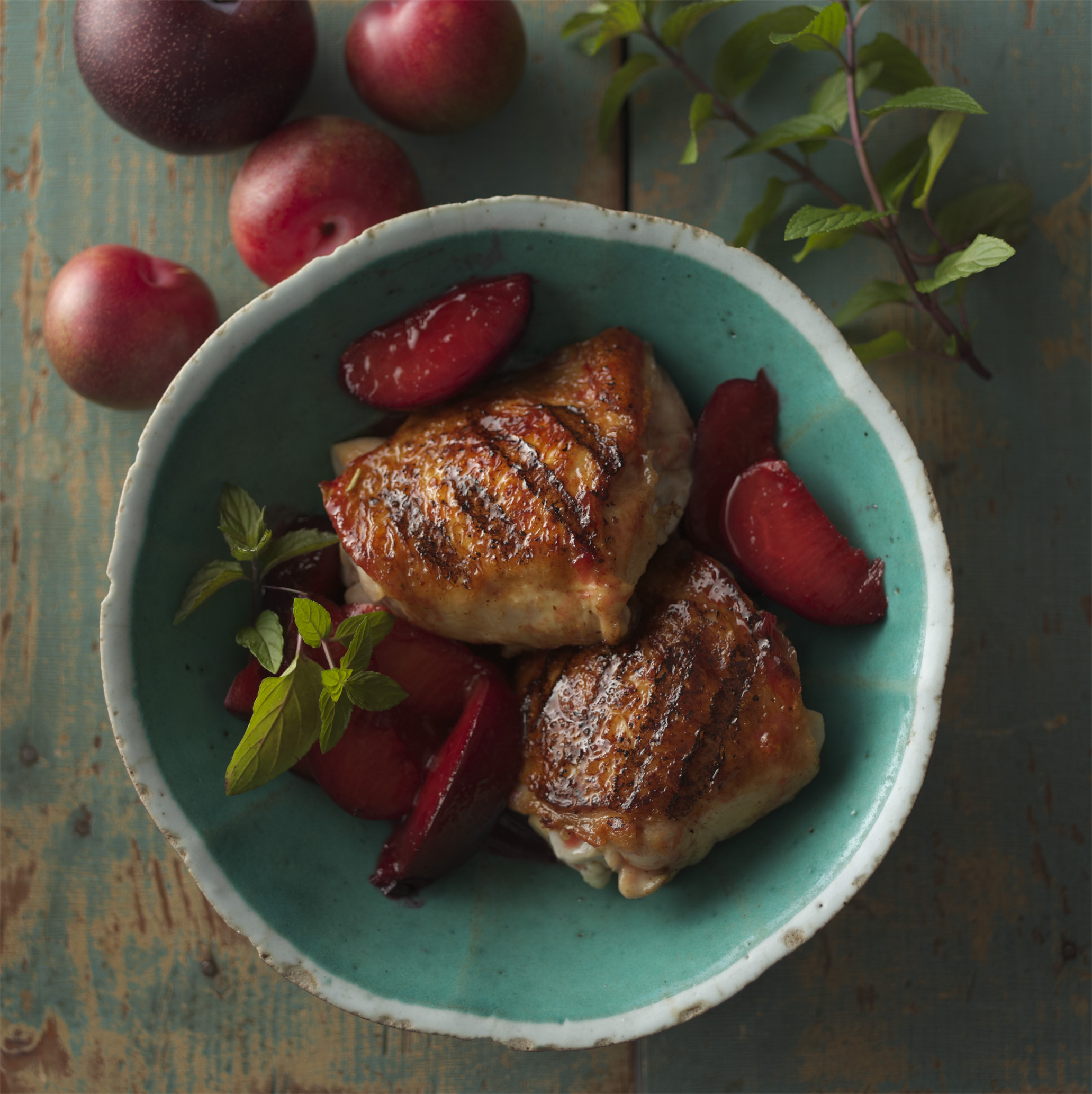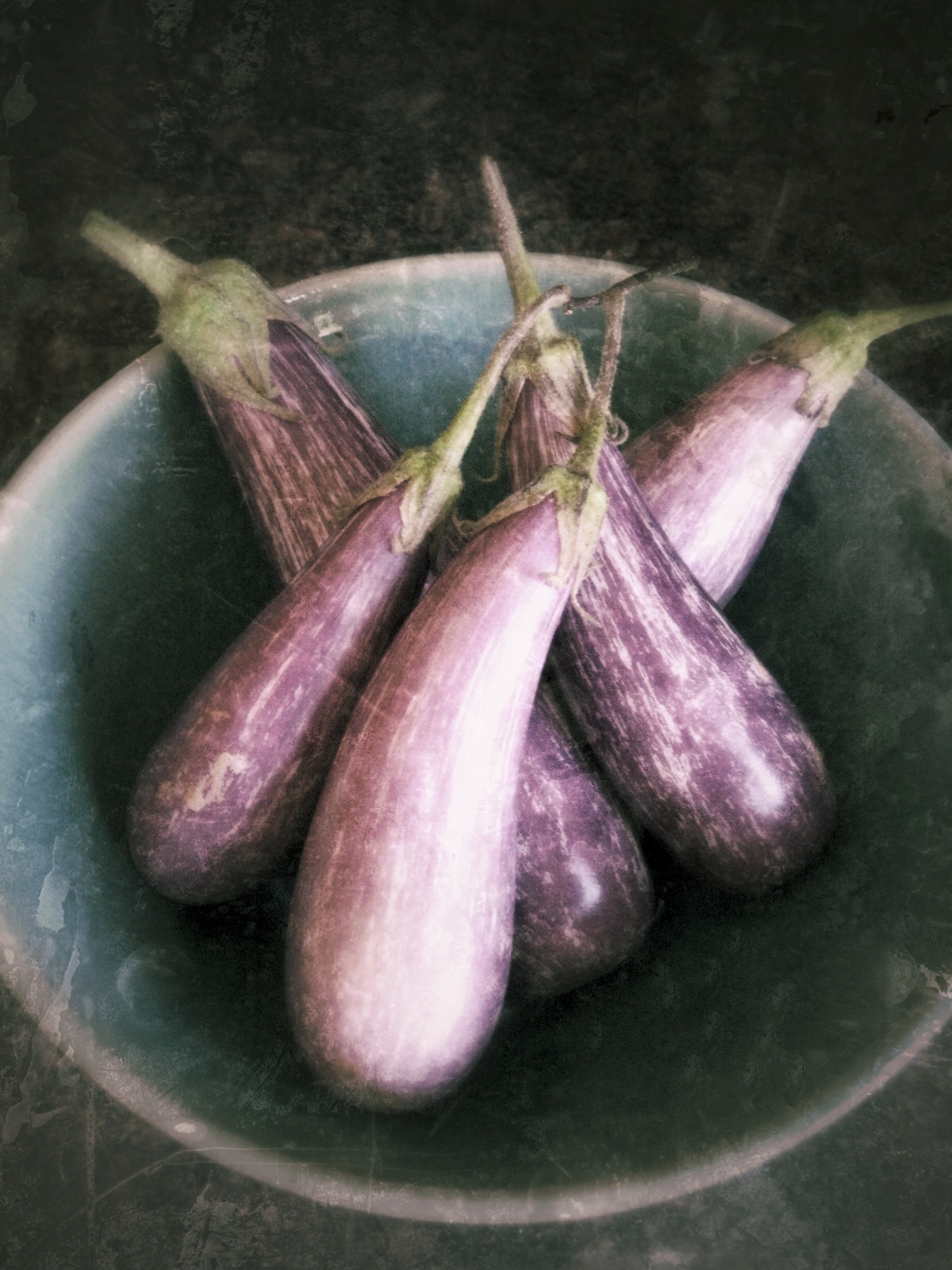Text + photos by Lisa Golden Schroeder
Wild American plums flourishing just around the corner
My neighborhood walks are a meandering five squarish miles —a near perfect 10,000 steps. I live on the outskirts of a large Midwestern metro; close enough to commute comfortably for work, far enough to feel like I leave car exhaust well behind as I wind my way around the northern edge of a large lake, heading to my country road. A road that leads to an apple orchard, a road that sits companionably between two semi-rural golf courses.
As March 2020 resolutely marched towards enveloping us all in a hazy cocoon of fear and consternation that we couldn’t buy toilet paper, I found myself venturing out in an in-between season I rarely explore. Late March and the better part of April in my world are often grey, more than chilly, sometimes coated with wet snow that refreshes the frozen landscape of my slowly awakening garden. But as everything quickly shut down, my work included, I had to escape the Groundhog Day inevitability of catching up on old episodes of “Homeland” and needlepointing myself to some semblance of comfort. While my still-employed husband toiled away on his makeshift desk of two TV trays in our family room, my big event each day was seriously bundling up and walking. And walking. And walking.
Skirting the edges of my neighborhood
The confines of my neighborhood are nothing new to me. For nearly 30 years I’ve created rambling loops, starting at my front step. I trace cul-de-sacs, bump up against county boundaries, and skirt the outer margins of golf greens. This year as I trudged along those familiar, very quiet streets, the air had a frosty, otherworldly feel. And I began to notice fragrant wild blooms I swear I didn’t see last year, marveled at the limey-green wild grape vines unfurling themselves around fledging foliage, and spied fingertip blossoms of berries hiding deep within brambles that protect the rugged ditches alongside parts of the orchard road. My passing fancies surrounding wild foods, with time on my side, became an engrossing preoccupation. Anything I could safely identify as edible was in my sights.
Mysterious white blossoms
As spring segued into balmier summer, I shed layers and kept walking. And it became hard to get through a seamless wander without stopping, plucking, or returning to an intriguing spot with my car, so I could harvest a container of something to experiment with. My plant ID app was in full swing, assuring me that what I carried home was what I thought it was.
I found my extended backyard is like an organic farm—sans farmers. Of course, this notion is novel only to me—plenty of people forage for food out in fields and woods every season. But sticking close to my invisible borders, I woke up to a veritable green grocery filled with luxuriantly available eatables.
The perfection of wild grape leaves, plucked from vines that extravagantly twined themselves around anything standing still.
Fermenting tender green leaves can happen throughout the summer season as new growth unfurls on available vines.
Fragrant basmati, ground lamb, citrusy sumac…so worth the time.
Lessons learned…
Wild grape leaves are particularly easy to brine or ferment. I love stuffed grape leaves, and my own jars of carefully rolled leaves eclipsed what I buy at the Mediterranean market.
By early autumn, cunningly beautiful bunches of miniature, seedy grapes are fun to press into bottles of glorious juice. And I saved several bagsful of grapes in the freezer, to simmer down to a silky grape molasses.
Blackcap + golden raspberries = a peachy hybrid that I’m guessing is cross-pollination of domestic and wild varieties. I scored an enormous cache of them (admittedly trespassing momentarily at the outer reaches of a neighbor’s property), along with a small basket of crimson gooseberries. I wrangled with thorny branches that climbed old oaks and created nearly impenetrable embankments along roadside easements. I stirred up a huge berry mash—adding just enough organic sugar, not worrying about seeds—and simmered it into sparkling jars of multi-berry preserves. Oh, I also remembered a stash of northern wild blueberries in the freezer, so those joined the party.
The romance of elderberries, beloved as wine, cocktail syrups, and in healthful tonics, caught my imagination; I was certain I’d seen the unique berry clusters but didn’t recognize them at first. I spent a few hours scouring some of my regular haunts—and was over the moon to find a long run of elderberry bushes banking the back side of the neighborhood. I realize now that I clipped the bunches a little too early, as the berries could be sweeter. But I invested the time to carefully strip the berries from their purple stems, cook them down with a little honey and spices, and strain them into a deeply crimson syrup. I have a single bottle, that I’m not sure I love, but it’s worth another go next year.
Those white blooms I noticed in April were not mysteriously rogue crab apples, but the tangled branches of Prunus Americana—wild plums—found not on the Banks of Plum Creek but flourishing as a thicket, flanking an out of the way bend in the road. They were revealed when my town’s road maintenance crew aggressively mowed down stands of dusty sumac along the lane. Once diminutive plums appeared, I had my ah-hah moment and was thrilled with the thought of my own secret grove. But fearful I’d lose the harvest to birds before I had a crack at them, I gathered a big bag a little too early. Ripened on my counter, the still slightly astringent fruit was labor intensive to process, but my new pantry stash of tangy-sweet plum ketchup and a huge jar of vinegar fermented from plum skins and pits were well worth the effort.
I finally satisfied my fascination with ground sumac—I’ve loved Middle Eastern food long before it became a thing—so harvested the brick red drupes from the Staghorn sumac trees scattered throughout my walking routes. My first batch was too early—the seeds dried but wouldn’t easily strip away from the branches. I ground them up, but they lacked the citrusy aroma and flavor I wanted. Round two was better—I’d been put off by the little hairs that surround the seeds as they ripen, but that’s the doneness test for harvest. The ground spice is wonderful in the rice and toasted pine nut filling I made for my grape leaves.
Time is the secret sauce for making the most of what’s found in the natural world. I became a food processor in the first order, which was surprisingly satisfying. Instant gratification during a time of uncertainty. My mom’s old food mill, a dented canning kettle, a clutch of canning jars, my long-forgotten food dehydrator, and diligence were all the tools I needed. Looking back on this growing season, I have a renewed appreciation for how beautiful and priceless the world is—no matter where we live.
This year? Choke cherries, mulberries, figuring out more wild greens to add to my salad bowl or stir-fry…I’m hoping soon we’ll all be ready (and able) to embrace life again.
